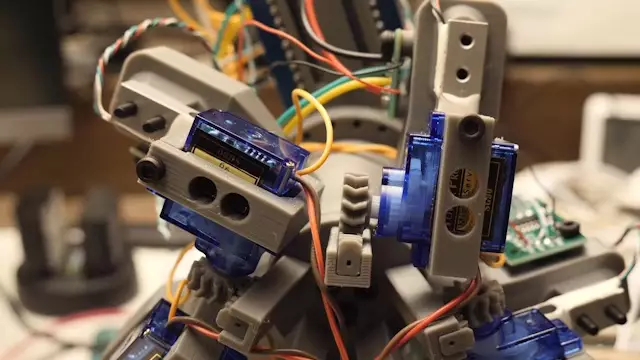In an era where technology continuously redefines what’s possible, the concept of a robot that can physically manipulate locks using the laws of physics feels like a leap into the future. At first glance, it seems almost cinematic—imagine a tiny autonomous device deftly navigating complex lock mechanisms, sensing internal resistance, and adjusting its actions in real-time to effortlessly open safes and secured doors. Such innovations explode the traditional perception of lockpicking, transforming it from an artful human skill into a precise, machine-driven science. Yet, the journey toward realizing this vision is riddled with formidable technical hurdles, challenging even the most inventive minds.
Creating a robot capable of lockpicking isn’t simply about attaching some fancy tools to a machine and pressing a button. Instead, it involves integrating advanced sensors, sophisticated algorithms, and precise mechanical actuation, all working in harmony based on the fundamental principles of physics. The core idea is to simulate the tactile feedback that a human lockpicker would use—feeling the tension on the pins, sensing resistance, and making split-second decisions. The robotic system must emulate this intuitive sense through artificial means, which is an enormous challenge that pushes current engineering capabilities to their limits.
The Scientific Hurdles and the Road Less Traveled
The pursuit of physics-based lockpicking robots has been marked by both optimism and tough lessons. As demonstrated by ongoing projects like those showcased on the YouTube channel Sparks and Code, the task is not as straightforward as programming a motor to turn a lock. Early iterations, often brute-force in nature, could eventually open locks but at an impractical time cost—taking days or even weeks for a single lock—making this approach unviable for real-world application.
In an inventive shift, researchers sought to incorporate tactile sensing into their robotic systems. Inspired by the principles of physics, these robots attempt to measure the tension and resistance in the lock’s internals—much like a human lockpicker gripping a pin with a tension wrench. This method involves sophisticated sensors that can provide real-time resistance data, allowing for adaptive pressure application and reducing the trial-and-error nature of earlier designs. However, translating this concept into a working prototype has proven far more complex—sensing mechanical resistance accurately and translating it into precise motor control remains elusive.
Despite multiple revisions and a flurry of coding adjustments, the project remains in developmental limbo. The challenges stem from the inherent complexity of lock mechanisms—especially higher-security ones with multiple tumblers, unpredictable barrel designs, and sophisticated internal components meant to foil automation. The physics-based approach, while promising, encounters limitations.
The Inspiration and Future Prospects
Nevertheless, the effort embodies a spirit of relentless innovation. The idea of a robotic lockpicker that leverages physics principles offers a tantalizing glimpse into future security systems—both as tools for testing the robustness of locks and as potential cybersecurity assets. It is a bold stride toward automating a traditionally skill-intensive craft, leveraging scientific understanding over brute-force methods.
Furthermore, the pursuit underscores the importance of interdisciplinary knowledge—melding mechanical engineering, physics, AI, and sensor technology to push boundaries. The challenges faced highlight the intricacies involved in replicating human intuition through machines—a task that is not merely about mechanical precision but also about understanding and interpreting subtle physical cues in dynamic environments.
As the field advances, it is inevitable that smarter, more sensitive, and adaptable robotic systems will emerge. Today’s setbacks are merely stepping stones toward a future where lockpicking robots could serve both ethical and malicious purposes, igniting debates about security and privacy in equal measure. Regardless, the effort to harness physics to facilitate lock manipulation speaks volumes about our ambition to blend scientific insight with mechanical prowess, forging tools that challenge the very notion of security and human skill.

